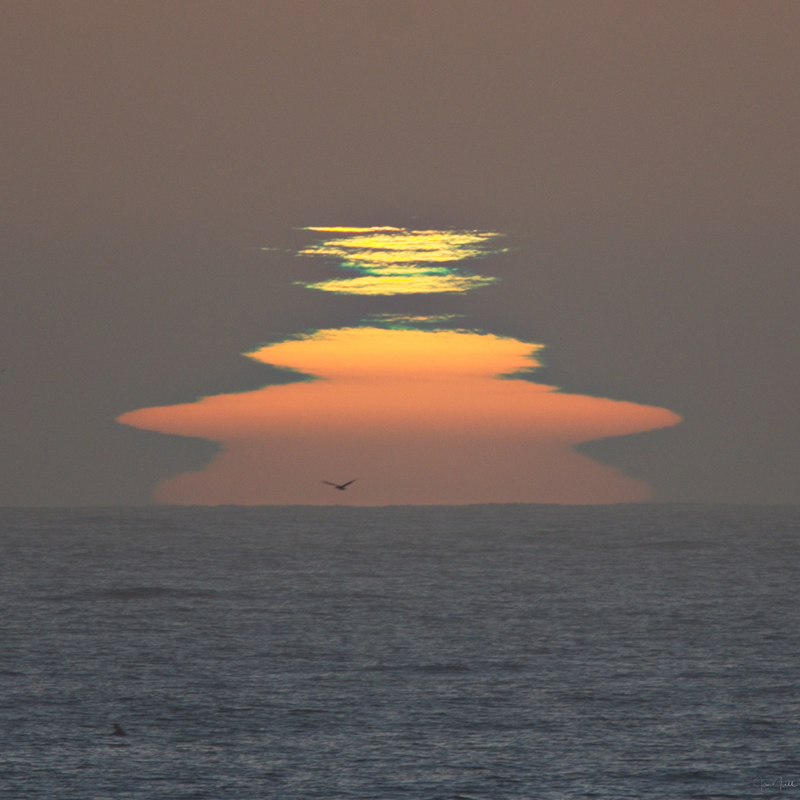Capturing the rare ‘green flash’ is tricky business

 CONTRA COSTA COUNTY, CA (Oct. 16, 2021) — When I first studied meteorology at San Jose State decades ago, I went camping at Big Sur with some fellow students.
CONTRA COSTA COUNTY, CA (Oct. 16, 2021) — When I first studied meteorology at San Jose State decades ago, I went camping at Big Sur with some fellow students.
While gazing at a sunset over the ocean, a friend insisted that conditions were perfect to see a rare event known as a green flash. I’d never heard the term before.
When atmospheric conditions are right, a distinct green spot is briefly visible above the upper rim of the sun’s disk as it sinks below the horizon. Since it appears for no more than two seconds, it has been appropriately labeled as a green flash.
This sky spectacle is caused by the refraction of sunlight, which is particularly prominent at sunset. When setting, sunlight travels through more of the Earth’s atmosphere. The atmosphere bends the sunlight passing through it, separating the light into its different colors – much like a prism splits sunlight into rainbows.
A green flash is more likely to be seen in cloudless conditions when skies are free of haze and smoke. This allows more of the light from the setting sun to reach the observer without being scattered. A strong low-level temperature inversion, which is common over the ocean at our latitude, maximizes the refractive nature of the atmosphere on the horizon.
Unfortunately, our group of budding meteorologists didn’t catch a glimpse of the green flash that evening. As a matter of fact, of the hundreds of ocean sunsets I’ve observed since that time, I’ve never experienced the flash.
I’ve often wondered if the perfect atmospheric conditions just don’t occur on the days I’m looking west over the ocean as the sun drops down behind it.
Recently, I’ve discovered that it wasn’t bad luck that kept the holy grail of weather phenomenon out of my sight. My eyes were opened, so to speak, by some sunset pictures taken by fellow Bay Area meteorologist Jan Null.
Jan’s resume includes several decades as a forecaster at our local National Weather Service office, where he retired as lead forecaster, and several recent years as president of Golden Gate Weather Services.
Jan recently moved to Half Moon Bay, and his photograph hobby now includes frequent trips to the beach to capture sunsets. Like myself, Jan had a career filled with vain attempts to experience the flash. But now that he and his camera are regular evening beach visitors, everything has changed. He’s seen the light, on a fairly regular basis.
There are actually two common but different types of green flashes. One type, seen when the last rays of the setting sun fall behind the horizon, is known as the “inferior mirage.”
The other, which is seen above the sun as it takes the shape of a mushroom as it begins to set, is called a “mock mirage.”
Now that his eye is trained, Jan believes that about half the clear sky sunsets he captures on camera contain at least faint evidence of a green flash. I need to get back to the beach soon and train my blue eyes to see green.
Woody Whitlatch is a meteorologist retired from PG&E. Email your questions or comments to
clayton_909@yahoo.com
